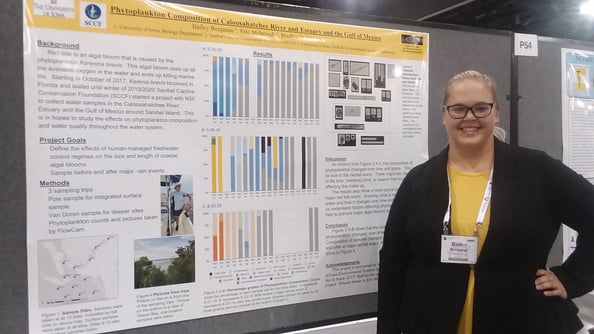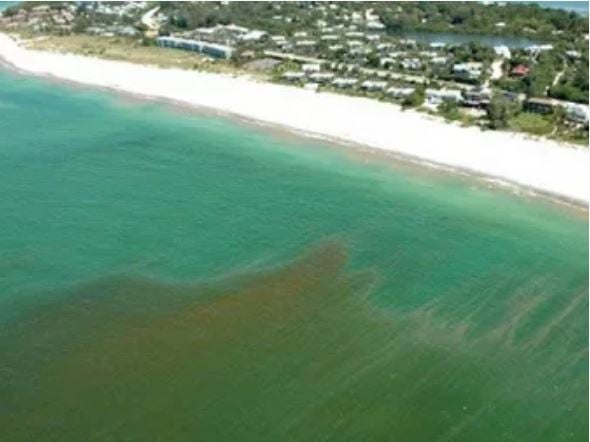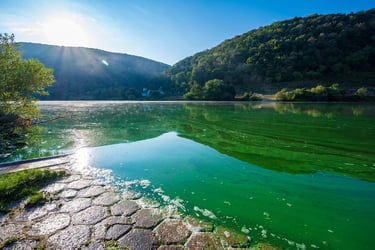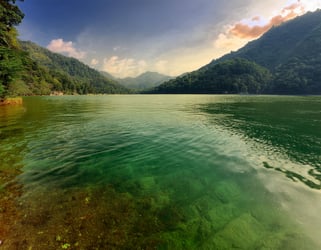It's hard to imagine a more picturesque location from which to perform one's research than Sanibel Island, Florida. However, as can be seen in the picture at the right, our most beautiful places are not exempt from the effects of climate change. Pictured above is what is commonly known as "red tide", but to Dr. Eric Milbrandt and the researchers at the Sanibel-Captiva Conservation Foundation (SCCF) is known to be an algal bloom caused by the phytoplankton Karenia brevis.
SCCF provides many services to its community, including maintaining several preserves to be enjoyed by the public, monitoring the conditions of the Caloosahatchee River, reducing storm water runoff, oyster and seagrass restoration, monitoring various species of birds, snakes, and turtles, and monitoring and studying the effects of phytoplankton blooms like the one above.
Dr. Eric Milbrandt was awarded a RAPID NSF grant to study phytoplankton blooms in the Caloosahatchee River estuary and in the Gulf of Mexico around Sanibel Island. Eric and his students in SCCF's Marine Lab have been working in collaboration with Dr. Natalie Nelson from North Carolina State University and Dr. Edward Phlips at University of Florida to develop protocols to characterize the phytoplankton present in the gulf and estuary with the goals of determining the effectiveness of SCCF's mitigation measures. At a recent Geological Society of America conference in Phoenix, Arizona, Fluid Imaging Technologies Applications Scientist, Heather Wright, ran into one of his students, Bailey Bergman (pictured below), presenting the work she carried out with Dr. Milbrandt's lab.

Bailey used the FlowCam to run samples from the water around Sanibel Island in order to classify the plankton present in their waters and determine water quality. She took samples both during Sanibel Island's dry season, with low flows, and during the wet season, with high flows, and is working to help develop protocols using the FlowCam.
Bailey's work underscores the efforts that both freshwater and marine researchers are undertaking. In a massive red tide event spanning from 2012-2014, more than 200 manatees perished while animal and human health was impacted by these toxic phytoplankton blooms. The work being carried out at SCCF is crucial to connecting the dots when it comes to plankton and the health of the Sanibel Island ecosystem.
For more references on how the FlowCam is being used for routine monitoring of algae and toxic bloom events, check out our resources page:











